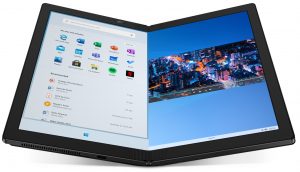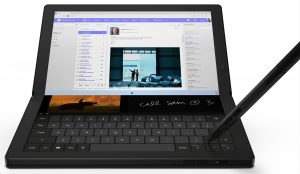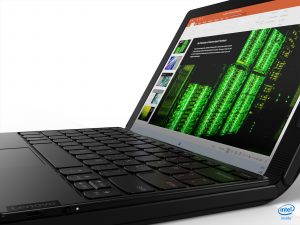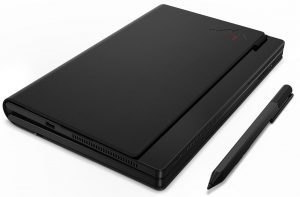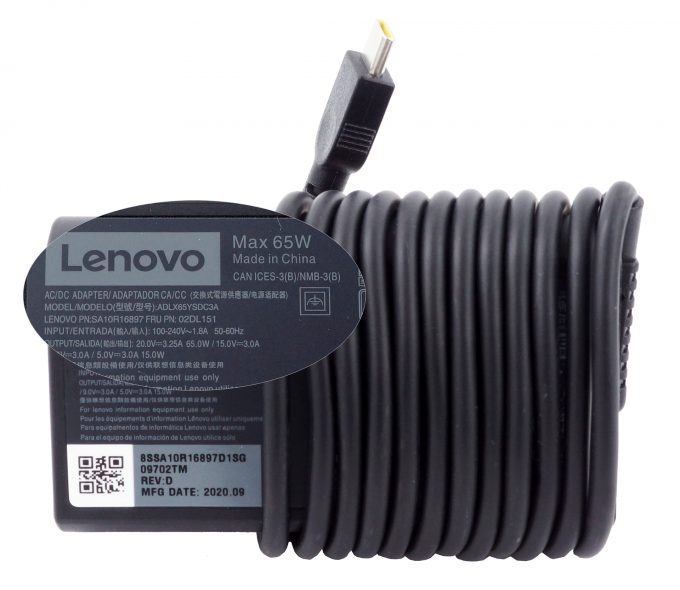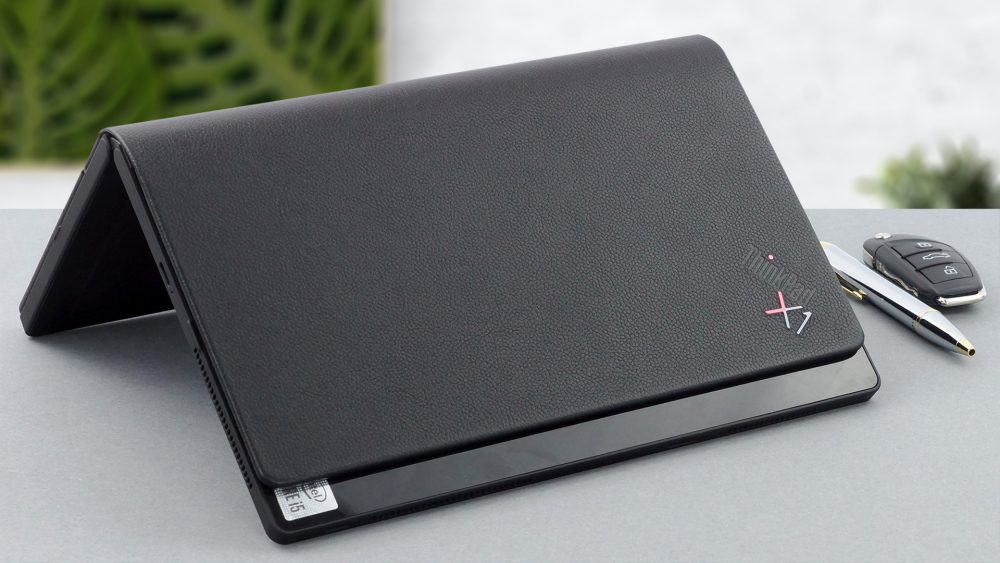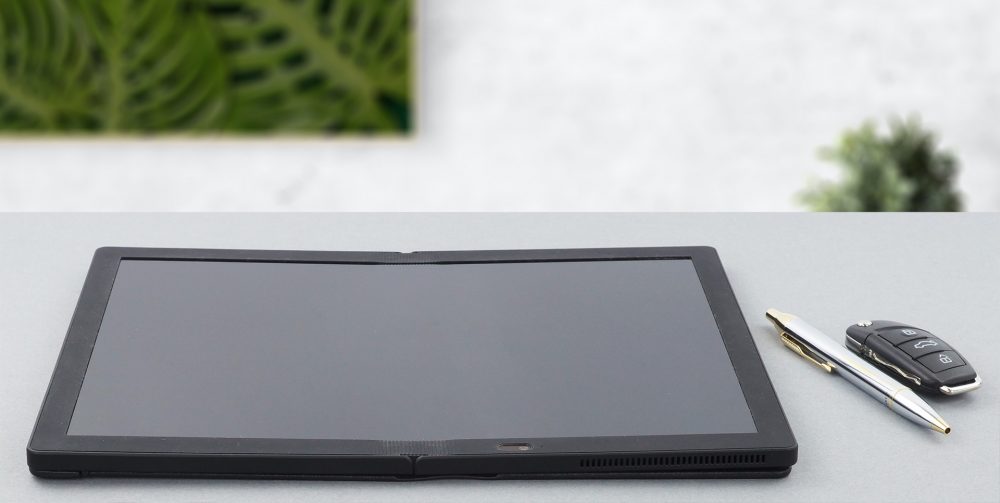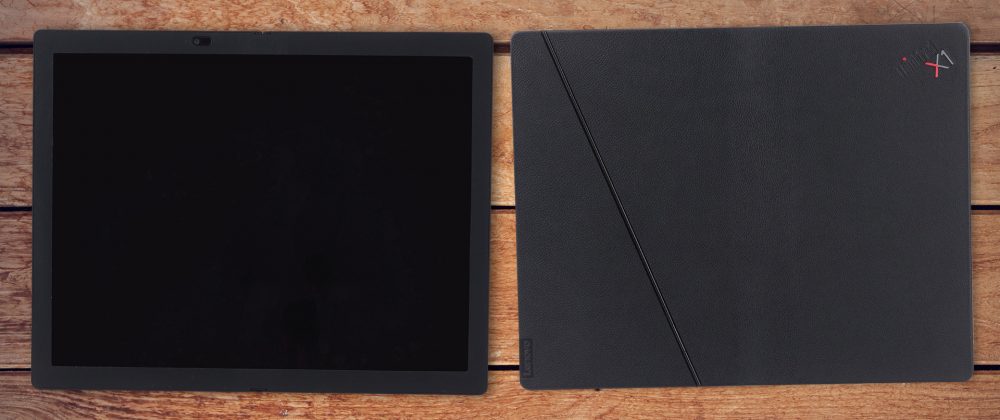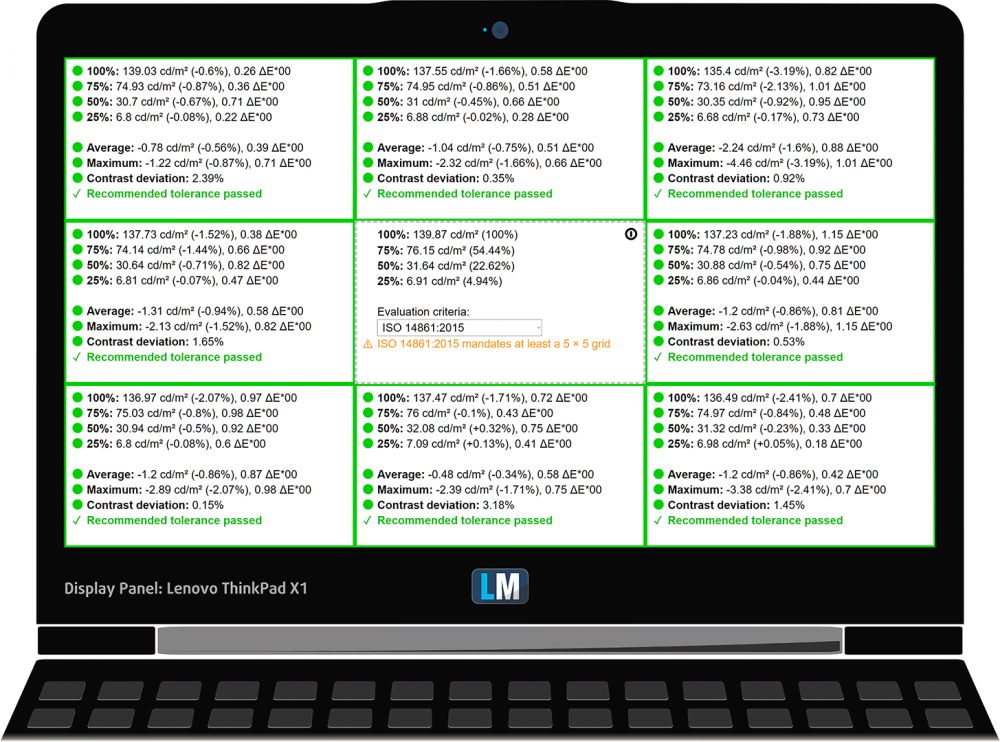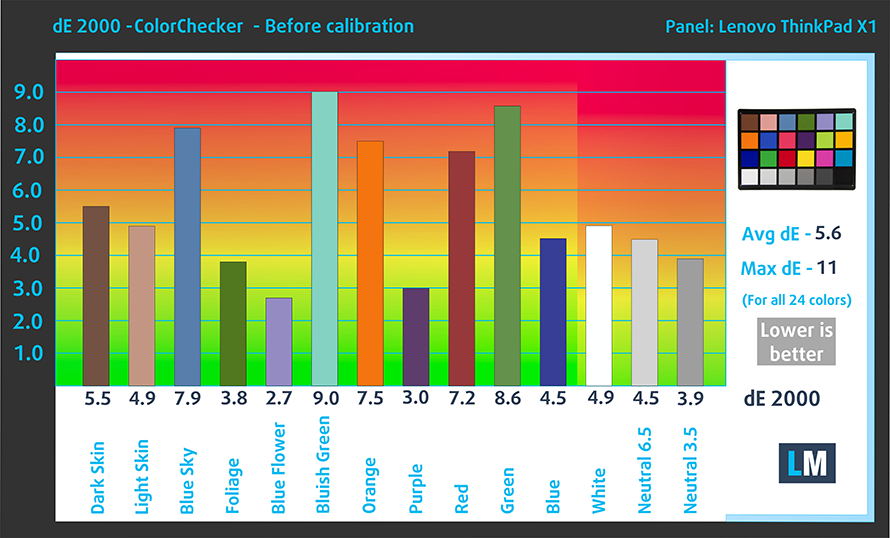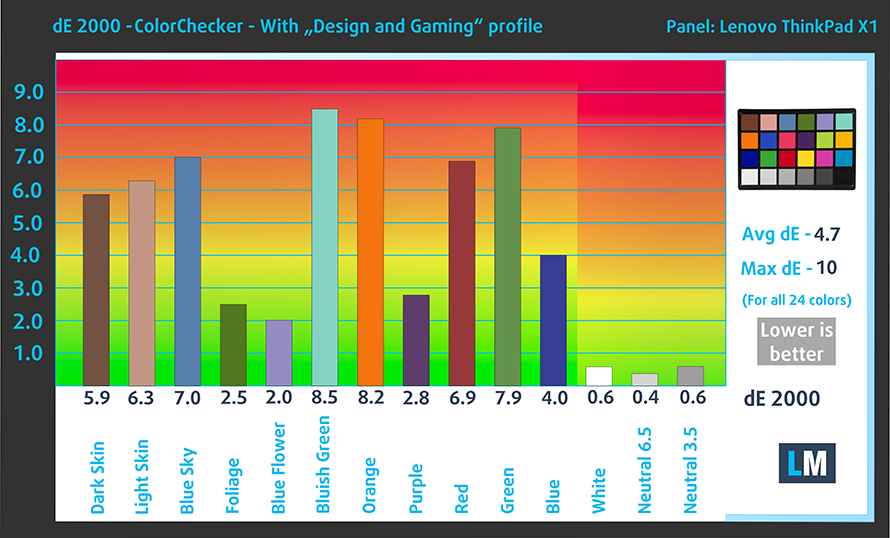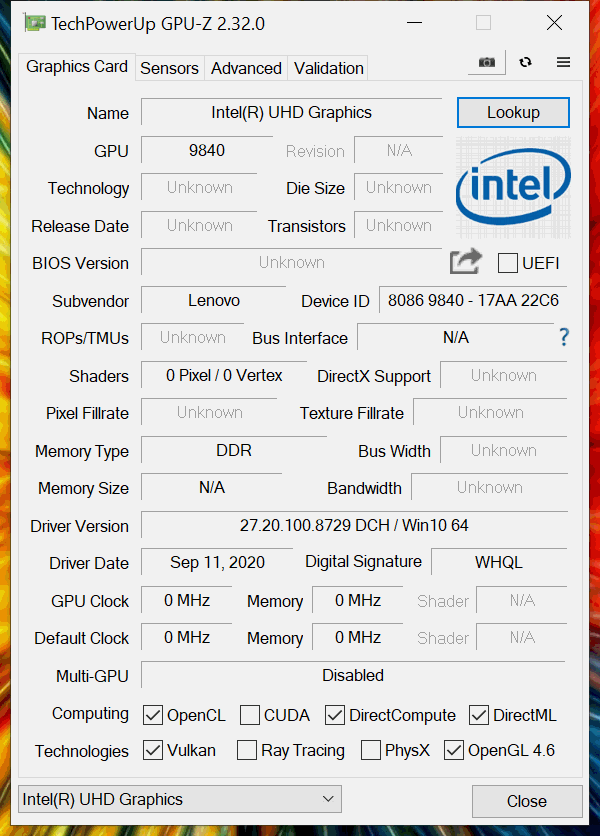Lenovo ThinkPad X1 Fold review – the first foldable laptop has a lot to prove
 Once upon a time, the laptop was revolutionary. It was something never seen before – you could bring your computing on the go. And through the years, the technology improved so much, that we take everything we have now for granted – big screens and touchpads, powerful internals, good battery life. Then, convertible laptops came around, and once again have shaken the industry. People saw the potential of having a laptop that can act as a tablet, whenever you want.
Once upon a time, the laptop was revolutionary. It was something never seen before – you could bring your computing on the go. And through the years, the technology improved so much, that we take everything we have now for granted – big screens and touchpads, powerful internals, good battery life. Then, convertible laptops came around, and once again have shaken the industry. People saw the potential of having a laptop that can act as a tablet, whenever you want.
And unlike Pickachu, the laptops have finally reached their third form – foldables. Similar to some smartphones that were released a couple of years back, the Lenovo ThinkPad X1 Fold has a display that can be folded in two. Of course, while this is revolutionary, it may still have some imperfections – like a slight crease in the middle, and a gap between the two sides, when the device is closed, but this is expected from a Gen 1 product.
What catches the eye here is that Lenovo hasn’t gone for the sleek, classy look. Instead, they wanted to make sure this device will work. And like a true ThinkPad, it features an industrial shell, which (according to them) has a MIL-STD-810H certification. And while it is not very stylish, it features a leather folio on its back. But more on that later.
One of the pillars of this foldable’s design is definitely the display. It is a 13.3-inch OLED panel with a 4:3 aspect ratio and a supposed 95% DCI-P3 color coverage. And another premiere you’ll see here will be that of the Core i5-L15G7 – an unorthodox five core 7W processor from Intel. So… let’s begin.
You can check the prices and configurations in our Specs System: https://laptopmedia.com/series/lenovo-thinkpad-x1-fold-gen-1/
Contents
Specs Sheet
- Display
- 13.3”, QXGA (2048 x 1536), OLED
- HDD/SSD
- up to 512GB SSD
- M.2 Slot
- 1x 2242 M.2 PCIe x4
- RAM
- up to 8GB
- OS
- Windows 11 Pro, Windows 10 Home, Windows 10 Pro
- Battery
- 50Wh
- Body material
- Magnesium alloy (+ Leather)
- Dimensions
- 299.4 x 236 x 11.5 mm (11.79" x 9.29" x 0.45")
- Weight
- 0.99 kg (2.2 lbs)
- Ports and connectivity
- 2x USB Type-C
- 3.2 Gen 2 (10 Gbps), Power Delivery (PD), DisplayPort
- Ethernet LAN
- 10, 100, 1000 Mbit/s
- Wi-Fi
- 802.11ax
- Bluetooth
- 5.1
- SIM Card Slot
- Features
- Fingerprint reader
- Web camera
- HD
- Backlit keyboard
- Microphone
- Four-Array Microphones
- Speakers
- 2x 1W, Dolby Atmos
- Optical drive
All Lenovo ThinkPad X1 Fold Gen 1 configurations
What’s in the box?
This device comes in an ordinary cardboard package. However, inside we found one box, containing the 65W USB Type-C power brick, and another fairly pretty box, which holds the ThinkPad X1 Fold, itself. And beneath the device, there is the Mini Keyboard, as well as the Lenovo Mod Pen.
Design and construction
As you can imagine, this is a very impressive piece of technology. It has a magnesium alloy chassis, which is covered by a leather folio. The construction surrounds the ingenious hinges, which make the folding possible. Simply said, they perform a swivel movement so that they provide support for the display in an opened position, and don’t crush it together when it’s closed. The entire thing weighs 2.2 kilos and while it’s folded it has a profile of 27.8mm. Indeed, not a very thin and light machine. However, when you unfold the ThinkPad X1 Fold, its profile lays at 11.3mm.
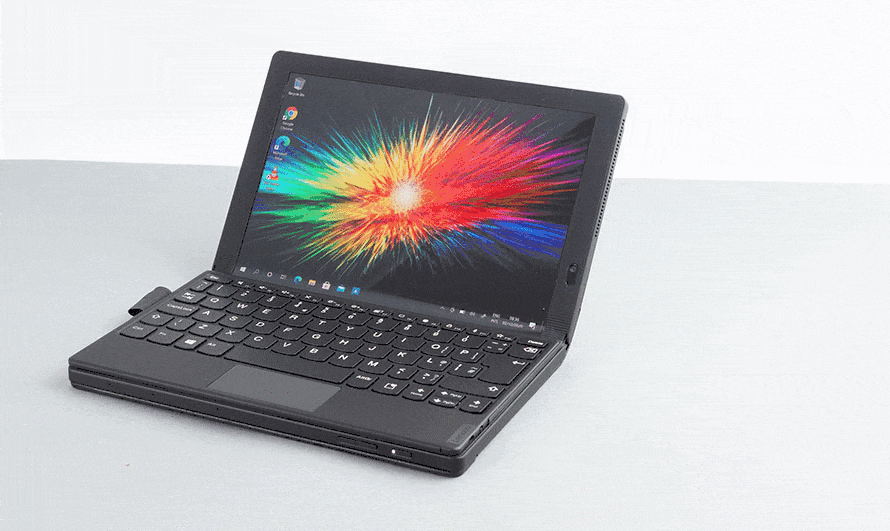
Interestingly, the leather folio on the charging port-side of the device takes a step backwards when you close the machine, which is inevitable, but we like the way Lenovo executed the movement.
Expectedly, the finish on the display is glossy, and it works with the included Lenovo Mod Pen. The Pen, itself, is very comfortable and it resembles the form of a pencil. There is a cap on the back, which opens to reveal the USB Type-C charging plug. According to the manufacturer, it’s battery should last for 156 of use when fully charged. In terms of specs, it has 4096 levels of pressure sensitivity, and it sports two buttons, remappable through the Lenovo Pen App.
Next, we have the keyboard. Or if we have to use its official name – the Lenovo Fold Mini Keyboard. It is extremely thin and has a Pen loop on its left side. And while its key travel is unsurprisingly short, the feedback is clicky, which makes it comfortable and easy to get used to. In addition to that, it has a super tiny, cute touchpad, which works relatively well, but we experienced some latency issues from time to time. Also, the keyboard kept disconnecting after a few minutes of use. However, once we unpaired and paired the device again, these issues faded away. By the way, if you keep the ThinkPad X1 Fold unused for some time, the Bluetooth connection might become unstable. The only fix we found was to turn the keyboard off and on, by the dedicated switch on the right.
According to Lenovo, the Fold Mini Keyboard’s battery should last for 40 hours, and it charges wirelessly when it’s placed inside the closed ThinkPad X1 Fold. On the downside, it doesn’t have a backlight, and it charges via Micro USB, although the aforementioned wireless charging, partially eliminates this little frustration.
So, this device is pretty comfortable to use both when it’s folded and unfolded. If you’re going to use it as a laptop, just pop the stand in the back, and place it on your desk. And while the stand, itself, is not very stable, the machine never fell, so we suppose it is doing its job.
Not in the last place, there is the 5MP front-facing camera which has an IR face recognition sensor sitting right beside it.
Ports
Sadly, the I/O here is very limited. It resembles only two USB Type-C 3.2 (Gen. 2) ports, both of which can charge the notebook and output a DisplayPort 1.2 signal. Additionally, there is one nano-SIM card slot and two speaker cutouts. Since the device has a fan, there’s a vent in the top left corner.
Disassembly and upgrade options
Display quality
Lenovo ThinkPad X1 Fold features an OLED touchscreen display. Its diagonal is 13.3″ (33.8 cm), and the resolution – 2048 х 1536. Additionally, the screen ratio is 4:3, the pixel density – 192 ppi, their pitch – 0.13 x 0.13 mm. The screen can be considered Retina when viewed from at least 46 cm (from this distance, the average human eye can’t see the individual pixels).
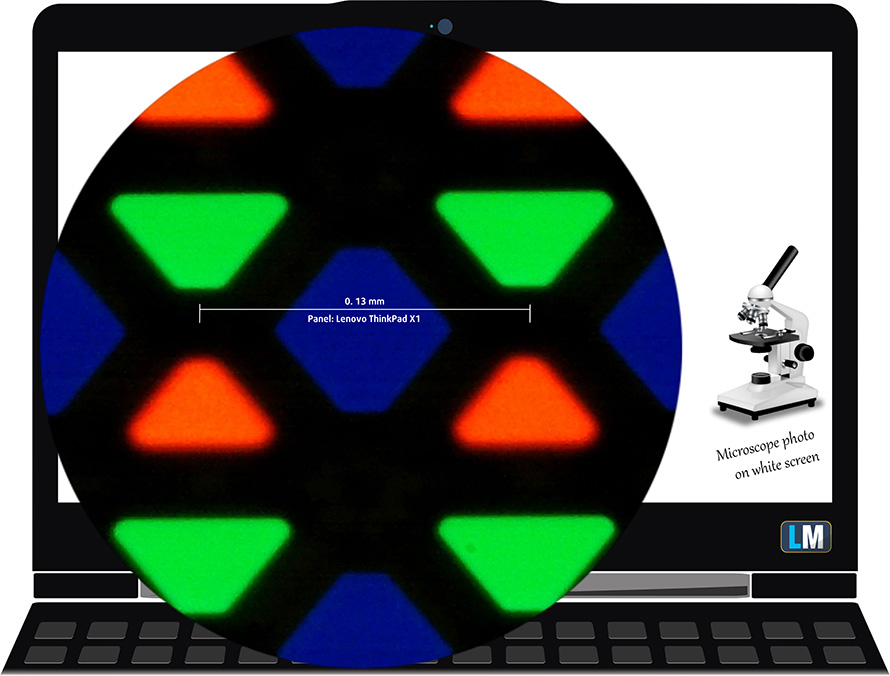
Its viewing angles are excellent. We have provided images at 45 degrees to evaluate quality.

The maximum measured brightness is pretty high – 477 nits (cd/m2) in the middle of the screen and 460 nits (cd/m2) average across the surface with a maximum deviation of 17%. The Correlated Color Temperature on a white screen and at maximum brightness is 6600K – slightly colder than the 6500K optimum for sRGB.
In the illustration below you can see how the display performs from a uniformity perspective. The illustration below shows how matters are for operational brightness levels (approximately 140 nits), which in this case are excellent.
Values of dE2000 over 4.0 should not occur, and this parameter is one of the first you should check if you intend to use the laptop for color-sensitive work (a maximum tolerance of 2.0 ).
To make sure we are on the same page, we would like to give you a little introduction to the sRGB color gamut and the Adobe RGB. To start, there’s the CIE 1976 Uniform Chromaticity Diagram that represents the visible specter of colors by the human eye, giving you a better perception of the color gamut coverage and the color accuracy.
Inside the black triangle, you will see the standard color gamut (sRGB) that is being used by millions of people on HDTV and on the web. As for the Adobe RGB, this is used in professional cameras, monitors, etc for printing. Colors inside the black triangle are used by everyone and this is an essential part of the color quality and color accuracy of a mainstream notebook.
Still, we’ve included other color spaces like the famous DCI-P3 standard used by movie studios, as well as the digital UHD Rec.2020 standard. Rec.2020, however, is still a thing of the future and it’s difficult for today’s displays to cover that well. We’ve also included the so-called Michael Pointer gamut, or Pointer’s gamut, which represents the colors that naturally occur around us every day.
The yellow dotted line shows Lenovo ThinkPad X1 Fold’s color gamut coverage.
Its display covers almost 100% of the sRGB/ITU-R BT.709 (web/HDTV standard) in CIE1976, and 98% of the DCI-P3 gamut, which ensures punchy, vibrant colors.
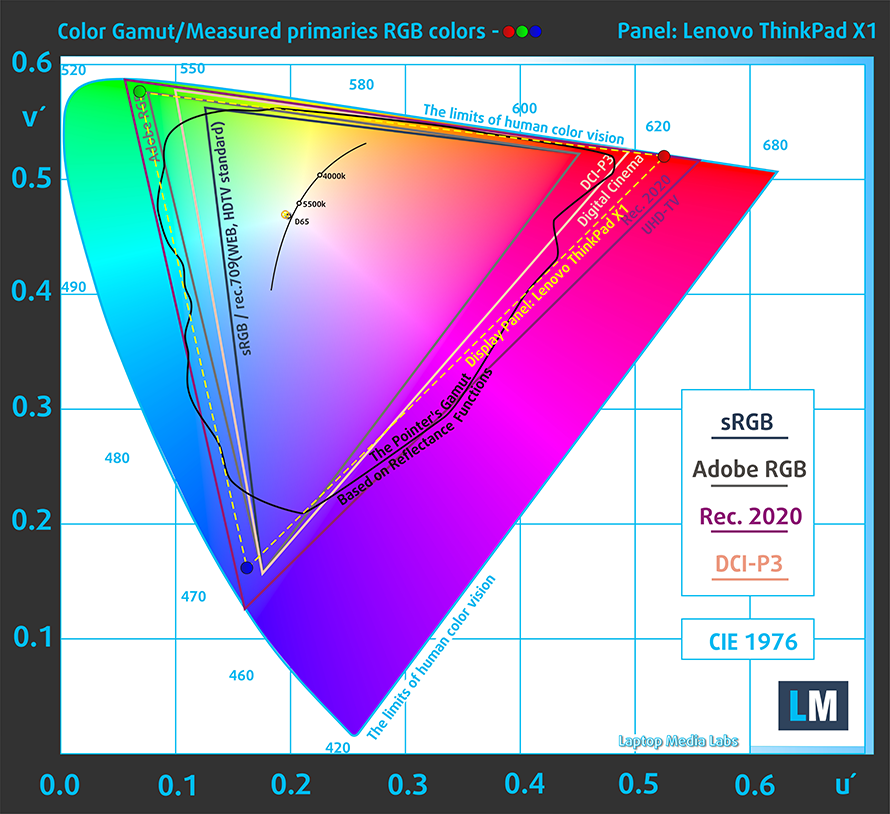
Our “Design and Gaming” profile delivers optimal color temperature (6500K) at 140 cd/m2 luminance and sRGB gamma mode.
We tested the accuracy of the display with 24 commonly used colors like light and dark human skin, blue sky, green grass, orange, etc. You can check out the results at factory condition and also, with the “Design and Gaming” profile.
Below you can compare the scores of Lenovo ThinkPad X1 Fold with the default settings (left), and with the “Gaming and Web design” profile (right).
The next figure shows how well the display can reproduce dark parts of an image, which is essential when watching movies or playing games in low ambient light.
The left side of the image represents the display with stock settings, while the right one is with the “Gaming and Web Design” profile activated. On the horizontal axis, you will find the grayscale, and on the vertical axis – the luminance of the display. On the two graphs below you can easily check for yourself how your display handles the darkest nuances but keep in mind that this also depends on the settings of your current display, the calibration, the viewing angle, and the surrounding light conditions.

Health impact – PWM / Blue Light
PWM (Screen flickering)
Pulse-width modulation (PWM) is an easy way to control monitor brightness. When you lower the brightness, the light intensity of the backlight is not lowered, but instead turned off and on by the electronics with a frequency indistinguishable to the human eye. In these light impulses, the light/no-light time ratio varies, while brightness remains unchanged, which is harmful to your eyes. You can read more about that in our dedicated article on PWM.
Lenovo ThinkPad X1 Fold’s display uses PWM with a very low frequency at all brightness levels, which isn’t good for your eyesight in this aspect.
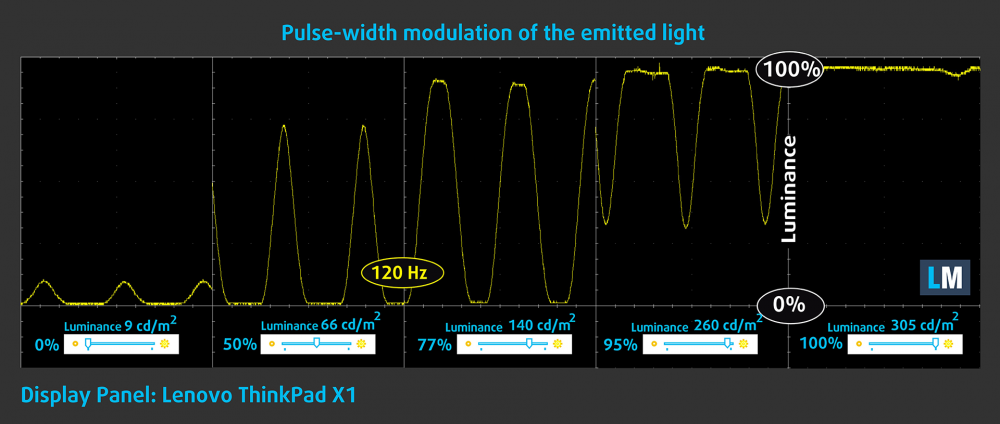
Blue light emissions
Installing our Health-Guard profile not only eliminates PWM but also reduces the harmful Blue Light emissions while keeping the colors of the screen perceptually accurate. If you’re not familiar with the Blue light, the TL;DR version is – emissions that negatively affect your eyes, skin, and your whole body. You can find more information about that in our dedicated article on Blue Light.
Conclusions
Lenovo ThinkPad X1 Fold’s display has a touchscreen OLED panel, ensuring good viewing angles, high-enough resolution, and an exceptional contrast ratio with true blacks. Also, it covers the sRGB gamut fully, and the same can be said for DCI-P3, where we measured a 98% coverage. This ensures very rich colors, but the color accuracy seems to have taken a toll, as even our profile isn’t able to put it in the standards. Sadly, the panel uses PWM for brightness adjustments at all brightness levels – something that our Health-Guard profile eliminates.
Buy our profiles
Since our profiles are tailored for each display model, this article and its respective profile package are meant for Lenovo ThinkPad X1 Fold.
*Should you have problems with downloading the purchased file, try using a different browser to open the link you’ll receive via e-mail. If the download target is a .php file instead of an archive, change the file extension to .zip or contact us at [email protected].
Read more about the profiles HERE.
In addition to receiving efficient and health-friendly profiles, by buying LaptopMedia's products you also support the development of our labs, where we test devices in order to produce the most objective reviews possible.

Office Work
Office Work should be used mostly by users who spend most of the time looking at pieces of text, tables or just surfing. This profile aims to deliver better distinctness and clarity by keeping a flat gamma curve (2.20), native color temperature and perceptually accurate colors.

Design and Gaming
This profile is aimed at designers who work with colors professionally, and for games and movies as well. Design and Gaming takes display panels to their limits, making them as accurate as possible in the sRGB IEC61966-2-1 standard for Web and HDTV, at white point D65.

Health-Guard
Health-Guard eliminates the harmful Pulse-Width Modulation (PWM) and reduces the negative Blue Light which affects our eyes and body. Since it’s custom tailored for every panel, it manages to keep the colors perceptually accurate. Health-Guard simulates paper so the pressure on the eyes is greatly reduced.
Get all 3 profiles with 33% discount
Sound
Lenovo ThinkPad X1 Fold’s speakers have a rather low maximum volume. Its low and mid tones have some deviations, while the highs are clear.

Drivers
All of the drivers and utilities for this notebook can be found here: https://pcsupport.lenovo.com/us/en/products/laptops-and-netbooks/thinkpad-x-series-laptops/thinkpad-x1-fold-gen-1-type-20rk-20rl/downloads/driver-list
Battery
Now, we conduct the battery tests with Windows Better performance setting turned on, screen brightness adjusted to 120 nits, and all other programs turned off except for the one we are testing the notebook with. This foldable’s 50Wh battery lasts for 6 hours and 58 minutes of Web browsing and 8 hours and 20 minutes of video playback.
In order to simulate real-life conditions, we used our own script for automatic web browsing through over 70 websites.
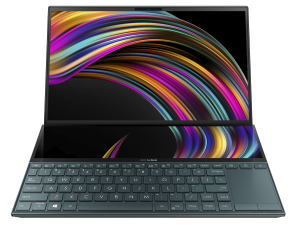

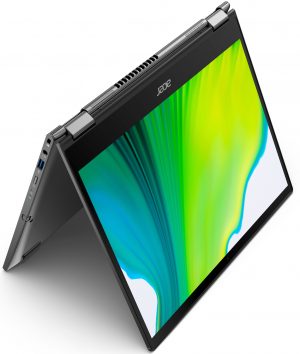
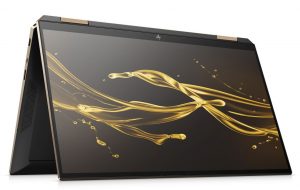
For every test like this, we use the same video in HD.




CPU options
This laptop exclusively comes with the Intel Core i5-L16G7. It is a 5-core processor with a base frequency of 1.4 GHz and a maximum boost of 3.0 GHz. Its Cache size is 4MB, and it’s built on a 10nm node with a TDP of 7W.
Results are from the Cinebench 20 CPU test (the higher the score, the better)
Results are from our Photoshop benchmark test (the lower the score, the better)
GPU options
Respectively its integrated graphics is the Intel UHD Graphics with a Base clock of 200 MHz and a maximum dynamic frequency of 500 MHz.
Results are from the 3DMark: Time Spy (Graphics) benchmark (higher the score, the better)
Results are from the 3DMark: Fire Strike (Graphics) benchmark (higher the score, the better)
Results are from the Unigine Superposition benchmark (higher the score, the better)
Gaming tests

| DOTA 2 | HD 1080p, Low (Check settings) | HD 1080p, Normal (Check settings) | HD 1080p, High (Check settings) |
|---|---|---|---|
| Average fps | 49 fps | 27 fps | – fps |
Temperatures and comfort
Max CPU load
In this test we use 100% on the CPU cores, monitoring their frequencies and chip temperature. The first column shows a computer’s reaction to a short load (2-10 seconds), the second column simulates a serious task (between 15 and 30 seconds), and the third column is a good indicator of how good the laptop is for long loads such as video rendering.
For pretty much the entire length of the session, the Core i5-L16G7 worked at about 1.7-1.75 GHz, while the temperature was in the neighborhood of 90C. Indeed, pretty high. However, the tiny fan was quiet enough, and the maximum temperature on the backside of the device was no more than 40°C.
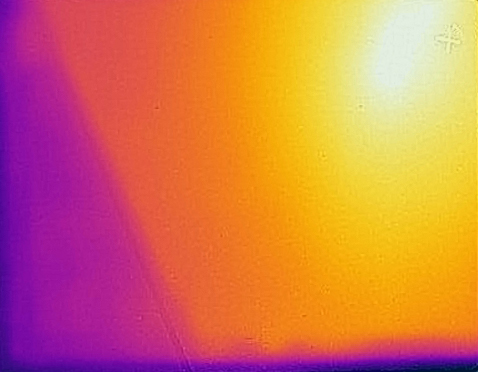

Verdict
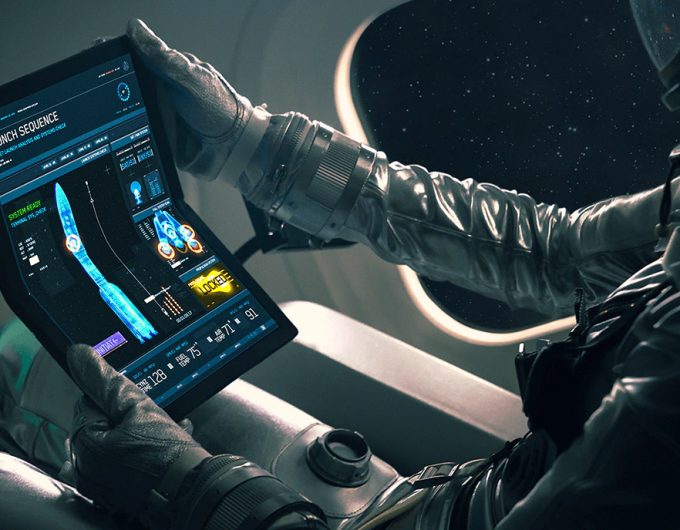 You don’t get to see such machines often. Before we wrap this review up, we have to say that it is a remarkable device, and we want to praise Lenovo for having the balls to make it. However, with every Gen 1 product, you should expect some minor issues that need taking care of. The first one here is the performance. This is not a powerhouse. You won’t be able to edit your videos or play the latest AAA titles. Accept it. However, you can do a ton more stuff. By the way, we had an early sample from Lenovo, so the performance might be better on a retail unit.
You don’t get to see such machines often. Before we wrap this review up, we have to say that it is a remarkable device, and we want to praise Lenovo for having the balls to make it. However, with every Gen 1 product, you should expect some minor issues that need taking care of. The first one here is the performance. This is not a powerhouse. You won’t be able to edit your videos or play the latest AAA titles. Accept it. However, you can do a ton more stuff. By the way, we had an early sample from Lenovo, so the performance might be better on a retail unit.
For example, the laptop can be your daily tablet, that you get to work, and you will have the privilege of any ThinkPad X1 user out there. Also, you can use it as a tiny laptop, with the Fold Mini Keyboard attached to the bottom portion of the panel, and definitely not on the last place, there is the Lenovo Mod Pen.
Keep in mind, that as with any foldable out there, there is a slight crease in the middle, where the folding happens. However, Lenovo has done a good job in minimizing it, as it can only be seen at a certain angle, or you can feel it with your finger.
However, very much on the downside is the upgradability. All of the memory is soldered to the motherboard, and the device only comes with 8GB of LPDDR4x RAM, working at 4266 MHz. Also, despite the upgradable storage (via one M.2 PCIe x4 2242 slot), you need to remove the folio, which is held in place by some double-sided tape, as well as the panel beneath it.
Lenovo ThinkPad X1 Fold’s display has a touchscreen OLED panel, ensuring good viewing angles, high-enough resolution, and an exceptional contrast ratio with true blacks. Also, it covers the sRGB gamut fully, and the same can be said for DCI-P3, where we measured a 98% coverage. This ensures very rich colors, but the color accuracy seems to have taken a toll, as even our profile isn’t able to put it in the standards. Sadly, the panel uses PWM for brightness adjustments at all brightness levels – something that our Health-Guard profile eliminates.
In addition to that, the battery life seems to be on the average – we got about 7 hours of Web browsing and 8 hours and 20 minutes of video playback.
Considering the price tag that the ThinkPad X1 Fold comes at, there is a lot of salt you need to take before you purchase it. You are definitely going to support Lenovo by giving them the needed feedback, but sadly, the product is unreachable for people that lack deep pockets. This means that for the masses, the ThinkPad X1 Fold will be an over-glorified organizer, and a marvel of the technology, only available to see online.
With that said, we have to say that this machine is groundbreaking and will pave the way for more laptop/tablet foldables, thus boosting the market and making the competition invest in the technology. And in a couple of years’ time, it very well might be the standard for mobile computing. Or is it? Tell us what you think in the comments.
Pros
- First in the world foldable laptop/tablet
- Comes with a keyboard and Pen inside the box
- The OLED display has an infinite contrast ratio and 98% DCI-P3 coverage
- The software works very with the foldable display and the keyboard attachment
- Premium design, featuring leather and magnesium
Cons
- Poor I/O
- The keyboard might need reconnecting a couple of times a day
- Pretty heavy
- Uses aggressive PWM for brightness adjustment (our Health-Guard profile fixes that)
You can check the prices and configurations in our Specs System: https://laptopmedia.com/series/lenovo-thinkpad-x1-fold-gen-1/
